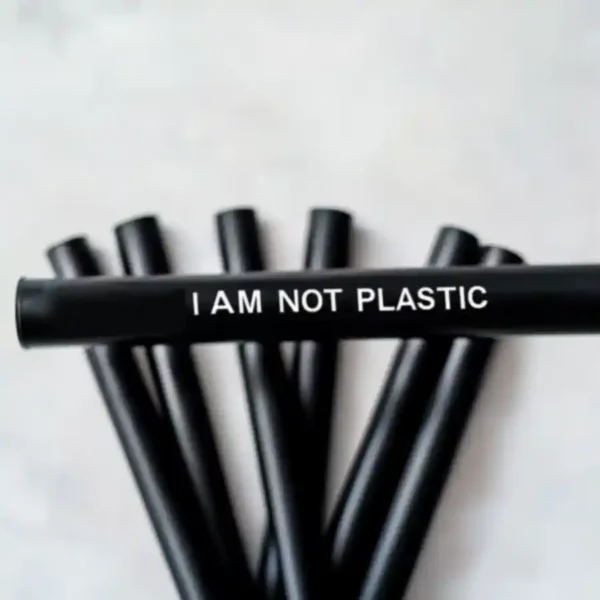Sustainable Sugarcane Straws: B2B Solutions for Eco-Friendly Dining

In a bustling hotel restaurant in Barcelona last summer, I witnessed a scene that’s becoming increasingly common worldwide: a guest politely refusing a plastic straw while the manager awkwardly explained they were still working on sustainable alternatives. Fast forward three months, and that same hotel proudly displayed signage announcing their switch to plant-based straws. This transition isn’t just happening by choice—it’s becoming a necessity.
As plastic straw bans sweep acros continents from Seattle to Singapore, businesses in the hospitality sector are scrambling to adapt. Over 60 countries have now implemented some form of single-use plastic restriction, with penalties ranging from hefty fines to busines license suspensions. The European Union’s Single-Use Plastics Directive has eliminated plastic straws entirely acros 27 countries, while California’s AB 1884 imposes $1,000 fines for establishments automatically providing plastic straws.
This regulatory tsunami has created an urgent need for viable alternatives that don’t compromise on quality, durability, or customer experience. Enter sugarcane straws: a revolutionary solution that’s transforming the sustainable dining landscape.
Made from bagasse—the fibrous byproduct left after extracting juice from sugarcane—these straws represent circular economy principles in action. Rather than creating new waste, they repurpose agricultural residue that would otherwise be burned or discarded. The result? A sturdy, biodegradable straw that performs remarkably like plastic but decomposes naturally within weeks when composted.
For global B2B buyers—from hotel chains and restaurant groups to event companies and distributors—sugarcane straws offer a compelling combination of sustainability credentials and practical functionality. They withstand hot and cold beverages without deteriorating, maintain structural integrity for hours, and provide the familiar tactile experience customers expect.
As we’ll explore throughout this article, the benefits of switching to sustainable sugarcane straws extend far beyond simply avoiding regulatory penalties. They represent a strategic busines opportunity—one that aligns with consumer demand, enhances brand reputation, and contributes meaningfully to environmental goals while maintaining operational efficiency.
Regulatory Compliance: Certifications for Sugarcane Straws

In today’s complex regulatory landscape, simply being “eco-friendly” isn’t enough. Your sustainable product choices must meet rigorous safety and environmental standards to protect both your busines and customers. This is particularly true in the food service industry, where items like straws come into direct contact with consumables.
For sugarcane straws to be viable in professional settings, certification is non-negotiable. The gold standards in this space are FDA (Food and Drug Administration) compliance and LFGB (Lebensmittel- und Futtermittelgesetzbuch) certification. The FDA’s guidelines for food contact materials ensure products are safe for their intended use, while the stricter German LFGB standard examines everything from raw material sourcing to manufacturing processes.
According to a 2023 industry survey, 78% of food service businesses reported being audited for single-use item compliance at least once in the previous year, with non-compliant products resulting in average penalties of $5,000 per violation. This makes choosing properly certified alternatives not just an environmental decision but a significant risk management strategy.
Properly certified sugarcane straws provide peace of mind and compliance assurance that many alternative products simply can’t match. When evaluating suppliers, look for those who can provide comprehensive documentation of their certification status, including test reports and certificates of analysis.
One hotel procurement director I spoke with recently shared: “After being fined for non-compliant ‘eco’ products from an uncertified supplier, we now exclusively work with manufacturers who can demonstrate FDA and LFGB certification. The documentation isn’t just paperwork—it’s protection for our busines.”
Beyond regulatory compliance, these certifications also serve as powerful marketing tools. They allow you to confidently promote your sustainable initiatives with verified claims, building authentic trust with increasingly skeptical consumers who are wary of greenwashing.
How Sugarcane Straws Compare to Other Eco Alternatives

The sustainable straw market has exploded with options in recent years, from paper and bamboo to PLA and steel. Making an informed choice requires understanding how these alternatives stack up acros multiple dimensions relevant to your busines operations.
According to a comprehensive UNEP analysis of plastic alternatives, the environmental footprint of different materials varies dramatically depending on factors like production methods, transportation distance, and end-of-life disposal. Their research found that sugarcane-based products typically generate 80% les greenhouse gas emissions throughout their lifecycle compared to conventional plastics.
When comparing different sustainable straw options for your busines, consider this practical breakdown:
| Alternative | Dayanıklılık | Customer Experience | Cost Per Unit | Disposal | Mevzuata uygunluk |
|---|---|---|---|---|---|
| ————- | ———— | ——————— | ————— | ———- | ———————— |
| Şeker Kamışı Pipetleri | 2-3 hours in liquid | Natural feel, no taste transfer | $0.03-0.05 | Home compostable | FDA/LFGB certified |
| Kağıt Pipetler | 20-40 minutes | Often softens quickly, potential taste transfer | $0.02-0.04 | Recyclable/compostable | Varies by manufacturer |
| PLA Straws | Similar to plastic | Plastic-like experience | $0.03-0.06 | Industrial compost only | Varies by manufacturer |
| Bambu Pipetler | Yeniden kullanılabilir | Natural but distinctive mouthfeel | $0.50-1.50 | Compostable after many uses | Varies widely |
| Metal Straws | Indefinite | Conducts temperature, requires cleaning | $0.80-2.00 | Reusable, not biodegradable | Food-grade metal standards |
Beyond the specifications, real-world performance matters tremendously. Hospitality businesses consistently report that sugarcane straws offer the most “plastic-like” experience without the environmental drawbacks. Unlike paper alternatives that can begin dissolving in cold drinks within minutes or PLA straws requiring specialized industrial composting facilities, sugarcane straws maintain structural integrity throughout the average beverage service while naturally decomposing in standard composting environments.
One restaurant manager noted: “We tried five different eco-friendly straws before settling on sugarcane. It was the only option that didn’t generate customer complaints while still meeting our sustainability goals.”
Top Busines Benefits of Switching to Sugarcane Straws

The decision to transition from plastic to sugarcane straws transcends environmental considerations—it delivers tangible busines advantages that directly impact your bottom line and brand positioning.
First, there’s the increasingly important matter of consumer perception. According to a 2023 GlobalData survey, 72% of consumers now actively notice and positively respond to sustainable dining practices, with visible items like straws serving as powerful signals of a busines’s environmental commitment. This translates to measurable brand loyalty—businesses implementing comprehensive sustainable dining programs report an average 18% increase in repeat customer rates.
Sugarcane straws offer distinctive advantages for businesses seeking sustainable dining solutions. Unlike many alternatives that require operational compromises, they integrate seamlessly into existing service protocols. Bartenders and servers don’t need to adjust techniques, customers don’t need special instructions, and inventory management remains straightforward.
From a financial perspective, while the unit cost exceeds conventional plastic, the comprehensive ROI often proves favorable when accounting for:
1. **Regulatory compliance savings**: Avoiding fines and penalties in jurisdictions with plastic restrictions
2. **Marketing value**: Authentic sustainability claims that differentiate your brand
3. **Customer acquisition costs**: Lower costs through improved perception and word-of-mouth
4. **Waste management savings**: Reduced disposal costs in areas with composting infrastructure
One international hotel chain documented a surprising outcome after switching to sugarcane straws acros 200+ properties: their procurement costs increased by approximately $120,000 annually, but they simultaneously saw a $380,000 reduction in waste management costs and generated an estimated $1.2 million in PR value from related sustainability communications.
For smaller operations, the calculation remains favorable. A 50-seat restaurant serving 200 drinks daily might spend an additional $1,500 annually on sugarcane versus plastic straws, but can leverage this visible commitment in marketing materials, social media content, and customer communications—typically generating value that far exceeds the incremental cost.
Environmental Impact: Why Sugarcane Straws Wins

The environmental case for sugarcane straws extends far beyond simply avoiding plastic pollution. When examining the full lifecycle impact, sugarcane straws demonstrate remarkable environmental advantages that make them truly exceptional among sustainable alternatives.
Most significantly, sugarcane cultivation actively captures carbon dioxide during growth. A 2022 lifecycle assessment published in the Journal of Cleaner Production found that one hectare of sugarcane can sequester approximately 40 tons of CO2 annually—making products derived from its byproducts potentially carbon-negative when accounting for the entire production cycle.
Sugarcane straws represent a meaningful step toward sustainable dining practices with quantifiable environmental benefits. Unlike paper straws requiring virgin tree pulp or PLA options derived from corn (often competing with food production), sugarcane straws utilize agricultural waste that would otherwise be burned, generating additional emissions.
The home compostability factor cannot be overstated. While many supposedly “eco-friendly” alternatives require industrial composting facilities—which remain unavailable in many regions—sugarcane straws naturally decompose in standard composting environments within 90 days. This practical end-of-life scenario makes them viable even in areas with limited waste infrastructure.
Water usage presents another compelling advantage. Sugarcane is predominantly rain-fed in major producing regions like Brazil, requiring significantly les irrigation than alternatives like corn-based PLA. This translates to a water footprint approximately 60% lower than many competing sustainable materials.
For businesses making environmental commitments or reporting ESG metrics, these attributes provide substantive, verifiable improvements rather than merely symbolic gestures.
Case Study: Sugarcane Straws Succes in Action

The theoretical benefits of sugarcane straws are compelling, but real-world implementation tells the most convincing story. Consider the experience of Coastal Breeze Resort Group, operating 12 boutique hotels acros Mediterranean and Caribbean destinations.
Facing increasing pressure from both regulations and environmentally-conscious guests, Coastal Breeze initiated a comprehensive audit of their single-use plastics in 2021. Plastic straws emerged as a particular pain point—they were distributing over 1.5 million annually acros their properties, with many ending up on their pristine beaches despite proper disposal efforts.
After testing multiple alternatives, they selected FDA-certified sugarcane straws for their sustainable coffee service and cocktail program. The initial challenge was cost—at approximately 2.8 cents more per unit than their previous plastic straws, the annual procurement increase approached $42,000.
However, the implementation yielded surprising results. Within six months, they documented:
- 96% positive guest feedback on the straw quality (compared to 43% for previously tested paper alternatives)
- 22% reduction in beach cleaning costs due to fewer straws appearing in coastal areas
- 88% decrease in straw waste volume due to compostability
- 15% increase in bar revenue, partially attributed to new eco-focused cocktail marketing
Most remarkably, their sustainable dining initiative featuring sugarcane straws as the centerpiece generated substantial PR value. Features in two travel magazines and countles social media mentions created an estimated $280,000 in equivalent advertising value—more than six times the incremental product cost.
Their Director of Sustainability noted: “The sugarcane straws became conversation starters. Guests would ask about them, which gave our staff natural opportunities to highlight our broader environmental initiatives. They transformed a potential negative—removing a convenience guests expected—into a positive brand touchpoint.”
Sıkça Sorulan Sorular
- How do sugarcane straws perform with hot beverages?
- Unlike paper alternatives that can quickly soften, sugarcane straws maintain structural integrity in hot beverages for 2-3 hours without flavor transfer. While not recommended for boiling liquids (above 90°C/194°F), they perform excellently in coffee, tea, and similar hot drinks at standard serving temperatures.
- What customization options are available for sugarcane straws?
- Sugarcane straws for sustainable events can be customized in multiple ways to align with your brand. Options include custom diameters (typically 6mm, 8mm, or 12mm), various lengths (standard 197mm or custom cut), bent or straight configurations, and custom packaging with your logo or sustainability messaging. Minimum order quantities for customization typically start at 10,000 units.
- How should sugarcane straws be stored?
- For optimal longevity, store sugarcane straws in a cool, dry place away from direct sunlight. While they’re considerably more moisture-resistant than paper alternatives, they perform best when kept in their original packaging until use. They don’t require refrigeration and have a typical shelf life of 24 months when properly stored.
- What is the minimum order quantity for wholesale purchases?
- Standard minimum order quantities start at 5,000 units for stock products and 10,000 units for customized options. Volume pricing tiers typically begin at 25,000, 50,000, and 100,000+ units with significant cost reductions at higher volumes. Distributors and large chains can inquire about specialized pricing programs for annual contracts.
- Are sugarcane straws more expensive than plastic straws?
- Yes, sugarcane straws typically cost 2-4 cents more per unit than conventional plastic straws, depending on volume and specifications. However, this differential is narrowing as plastic prices increase due to regulatory pressures and economies of scale improve for sustainable alternatives. The total cost comparison should also consider potential savings on waste management and compliance requirements in regions with plastic restrictions.
- How quickly do sugarcane straws decompose?
- In home composting conditions, sugarcane straws typically begin breaking down within 30 days and completely decompose within 90 days. In industrial composting facilities, this proces accelerates to approximately 45-60 days. If improperly disposed of in the environment, they will still biodegrade within 6-12 months depending on conditions—compared to 200+ years for plastic alternatives.
- Can sugarcane straws be recycled?
- While technically compostable rather than recyclable, sugarcane straws can be processed through organic waste streams in municipalities with composting programs. They should not be placed in conventional recycling bins as they require different processing methods than paper or plastic. For businesses, partnering with composting service providers offers the optimal end-of-life solution.







